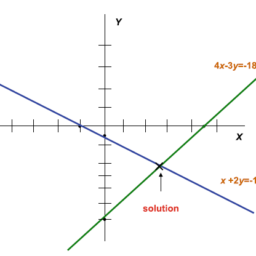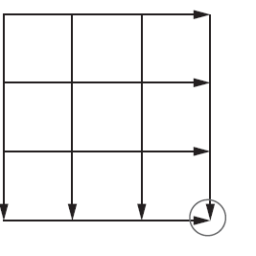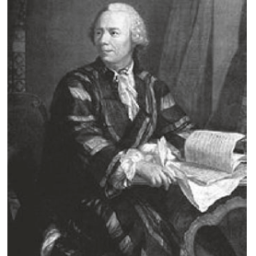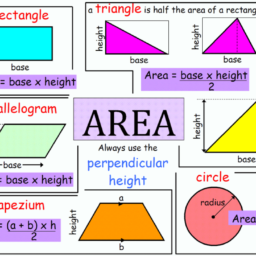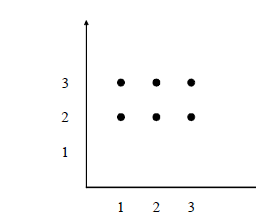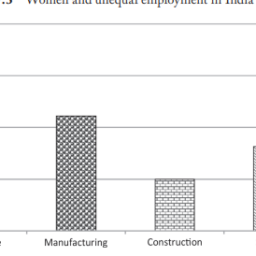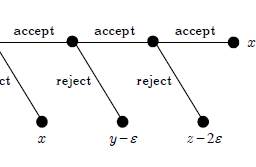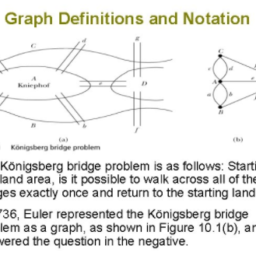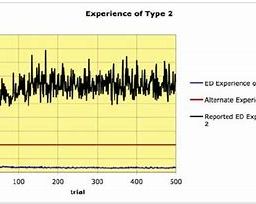统计代写|Best Predictor 抽样理论代考
统计代写
Given the height of the father what is the best predictor for the height of the son?
We have seen that given $X_{1}$ the best predictor for $X_{2}$ is the conditional expectation $E\left(X_{2} \mid X_{1}\right)$. We now compute this conditional expectation for a normal bivariate vector. Using the definition of $\left(X_{1}, X_{2}\right)$,
$$
\begin{aligned}
E\left(X_{2} \mid X_{1}\right) &=E\left(\sigma_{2} \rho Z_{1}+\sigma_{2} \sqrt{1-\rho^{2}} Z_{2}+\mu_{2} \mid X_{1}\right) \
&=\sigma_{2} \rho E\left(Z_{1} \mid X_{1}\right)+\sigma_{2} \sqrt{1-\rho^{2}} E\left(Z_{2} \mid X_{1}\right)+\mu_{2}
\end{aligned}
$$
Since $X_{1}=\sigma_{1} Z_{1}+\mu_{1}$, knowing $Z_{1}$ is equivalent to knowing $X_{1}$. Hence, $E\left(Z_{1} \mid X_{1}\right)=Z_{1}$. Recall that $Z_{1}$ and $Z_{2}$ are independent. Thus, $X_{1}$ and $Z_{2}$ are independent as well. Hence,
$$
F\left(Z_{2} \mid X_{1}\right)=E\left(Z_{2}\right)=0
$$
Therefore,
$$
E\left(X_{2} \mid X_{1}\right)=\sigma_{2} \rho Z_{1}+\mu_{2}
$$
Using that $X_{1}=\sigma_{1} Z_{1}+\mu_{1}$,
$$
E\left(X_{2} \mid X_{1}\right)=\frac{\sigma_{2}}{\sigma_{1}} \rho X_{1}+\mu_{2}-\frac{\sigma_{2}}{\sigma_{1}} \rho \mu_{1} .
$$
That is, the best predictor of $X_{2}$ based on $X_{1}$ is a linear function of $X_{1}$.
Going back to our application with $\mu_{1}=175 \mathrm{~cm}, \mu_{2}=178 \mathrm{~cm}, \sigma_{1}=\sigma_{2}=5$ $\mathrm{cm}$, and $\rho=0.6$ we get
$$
E\left(X_{2} \mid X_{1}\right)=0.6 X_{1}+73
$$
213
Problems
Using the conditional expectation we can answer the following question. When is the son predicted to be taller than his father?
The son is predicted to be taller than the father if and only if
$$
0.6 X_{1}+73>X_{1} .
$$
That is, if and only if $X_{1}<182.5$. If the father is taller than $182.5 \mathrm{~cm}$, then the son is predicted to be shorter than the father. On the other hand if the father is shorter than $182.5 \mathrm{~cm}$, then the son is predicted to be taller than the father. This is what Galton called regression toward the mean.
Problems
- Let
$$
X_{1}=\sigma_{1} Z_{1}+\mu_{1} \text { and } X_{2}=\sigma_{2} \rho Z_{1}+\sigma_{2} \sqrt{1-\rho^{2}} Z_{2}+\mu_{2}
$$
Show that $E\left(X_{1}\right)=\mu_{1}$ and $E\left(X_{2}\right)=\mu_{2}$. - Let $\left(X_{1}, X_{2}\right)$ be a bivariate normal vector. Let $X_{1}$ be the height of a father and $X_{2}$ be the height of his son. Let $\mu_{1}=175 \mathrm{~cm}, \mu_{2}=178 \mathrm{~cm}, \sigma_{1}=\sigma_{2}=5 \mathrm{~cm}$, and $\rho=0.6$.
(a) What is the probability that a son is taller than $180 \mathrm{~cm}$ ?
(b) What is the probability that a father is shorter than $170 \mathrm{~cm}$ ?
(c) What is the probability that the father is at least $2 \mathrm{~cm}$ taller than the son?
(d) What is the probability that the son is at least $5 \mathrm{~cm}$ taller than the father? - Use the hypotheses of Problem 2 to compute the following:
(a) Assume that the father is $170 \mathrm{~cm}$ tall. What is the predicted height for the son?
(b) Assume that the father is $190 \mathrm{~cm}$ tall. What is the predicted height for the
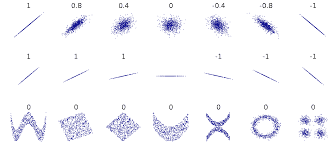
鉴于父亲的身高,什么是儿子身高的最佳预测指标?
我们已经看到,给定 $X_{1}$,$X_{2}$ 的最佳预测器是条件期望 $E\left(X_{2}\mid X_{1}\right)$。我们现在计算正态二元向量的条件期望。使用 $\left(X_{1}, X_{2}\right)$ 的定义,
$$
\开始{对齐}
E\left(X_{2} \mid X_{1}\right) &=E\left(\sigma_{2} \rho Z_{1}+\sigma_{2} \sqrt{1-\rho^{2 }} Z_{2}+\mu_{2} \mid X_{1}\right) \
&=\sigma_{2} \rho E\left(Z_{1} \mid X_{1}\right)+\sigma_{2} \sqrt{1-\rho^{2}} E\left(Z_{ 2} \mid X_{1}\right)+\mu_{2}
\end{对齐}
$$
由于$X_{1}=\sigma_{1} Z_{1}+\mu_{1}$,所以知道$Z_{1}$就等于知道$X_{1}$。因此,$E\left(Z_{1}\mid X_{1}\right)=Z_{1}$。回想一下 $Z_{1}$ 和 $Z_{2}$ 是独立的。因此,$X_{1}$ 和 $Z_{2}$ 也是独立的。因此,
$$
F\left(Z_{2}\mid X_{1}\right)=E\left(Z_{2}\right)=0
$$
所以,
$$
E\left(X_{2} \mid X_{1}\right)=\sigma_{2} \rho Z_{1}+\mu_{2}
$$
使用 $X_{1}=\sigma_{1} Z_{1}+\mu_{1}$,
$$
E\left(X_{2} \mid X_{1}\right)=\frac{\sigma_{2}}{\sigma_{1}} \rho X_{1}+\mu_{2}-\frac{ \sigma_{2}}{\sigma_{1}} \rho \mu_{1} 。
$$
也就是说,基于 $X_{1}$ 的 $X_{2}$ 的最佳预测器是 $X_{1}$ 的线性函数。
回到我们的应用程序 $\mu_{1}=175 \mathrm{~cm}, \mu_{2}=178 \mathrm{~cm}, \sigma_{1}=\sigma_{2}=5$ $ \mathrm{cm}$, 和 $\rho=0.6$ 我们得到
$$
E\left(X_{2}\mid X_{1}\right)=0.6 X_{1}+73
$$
213
问题
使用条件期望我们可以回答以下问题。预计儿子什么时候会比父亲高?
当且仅当儿子被预测比父亲高
$$
0.6 X_{1}+73>X_{1}。
$$
也就是说,当且仅当 $X_{1}<182.5$。如果父亲高于 $182.5 \mathrm{~cm}$,则预测儿子比父亲矮。另一方面,如果父亲比 $182.5 \mathrm{~cm}$ 矮,那么预测儿子比父亲高。这就是高尔顿所说的均值回归。
问题
1.让
$$
X_{1}=\sigma_{1} Z_{1}+\mu_{1} \text { 和 } X_{2}=\sigma_{2} \rho Z_{1}+\sigma_{2} \sqrt{ 1-\rho^{2}} Z_{2}+\mu_{2}
$$
证明 $E\left(X_{1}\right)=\mu_{1}$ 和 $E\left(X_{2}\right)=\mu_{2}$。
- 令 $\left(X_{1}, X_{2}\right)$ 为二元法线向量。令 $X_{1}$ 为父亲的身高,$X_{2}$ 为他儿子的身高。设 $\mu_{1}=175 \mathrm{~cm}, \mu_{2}=178 \mathrm{~cm}, \sigma_{1}=\sigma_{2}=5 \mathrm{~cm}$ , 和 $\rho=0.6$。
(a) 儿子高于 $180 \mathrm{~cm}$ 的概率是多少?
(b) 父亲比 $170 \mathrm{~cm}$ 矮的概率是多少?
(c) 父亲比儿子至少高 $2 \mathrm{~cm}$ 的概率是多少?
(d) 儿子比父亲至少高 $5 \mathrm{~cm}$ 的概率是多少? - 使用问题 2 的假设计算以下内容:
(a) 假设父亲的身高为 $170 \mathrm{~cm}$。儿子的预计身高是多少?
(b) 假设父亲的身高为 $190 \mathrm{~cm}$。预计的高度是多少
统计代考

其他相关科目课程代写:组合学Combinatorics集合论Set Theory概率论Probability组合生物学Combinatorial Biology组合化学Combinatorial Chemistry组合数据分析Combinatorial Data Analysis
my-assignmentexpert愿做同学们坚强的后盾,助同学们顺利完成学业,同学们如果在学业上遇到任何问题,请联系my-assignmentexpert™,我们随时为您服务!
抽样理论(sampling theory)是关于从总体中抽取具有代表性的和适当的样本以得出有效推论的原则和分析技术的一种统计学理论。包括两个主题:(1)样本如何抽取,即抽样方法的问题。如随机抽样、分层抽样、分层等比抽样、系统抽样、群类抽样、有限总体抽样等;(2)样本大小的问题。
计量经济学代考
计量经济学是以一定的经济理论和统计资料为基础,运用数学、统计学方法与电脑技术,以建立经济计量模型为主要手段,定量分析研究具有随机性特性的经济变量关系的一门经济学学科。 主要内容包括理论计量经济学和应用经济计量学。 理论经济计量学主要研究如何运用、改造和发展数理统计的方法,使之成为经济关系测定的特殊方法。
相对论代考
相对论(英語:Theory of relativity)是关于时空和引力的理论,主要由愛因斯坦创立,依其研究对象的不同可分为狭义相对论和广义相对论。 相对论和量子力学的提出给物理学带来了革命性的变化,它们共同奠定了现代物理学的基础。
编码理论代写
编码理论(英语:Coding theory)是研究编码的性质以及它们在具体应用中的性能的理论。编码用于数据压缩、加密、纠错,最近也用于网络编码中。不同学科(如信息论、电机工程学、数学、语言学以及计算机科学)都研究编码是为了设计出高效、可靠的数据传输方法。这通常需要去除冗余并校正(或检测)数据传输中的错误。
编码共分四类:[1]
数据压缩和前向错误更正可以一起考虑。
复分析代考
学习易分析也已经很冬年了,七七八人的也续了圧少的书籍和论文。略作总结工作,方便后来人学 Đ参考。
复分析是一门历史悠久的学科,主要是研究解析函数,亚纯函数在复球面的性质。下面一昭这 些基本内容。
(1) 提到复变函数 ,首先需要了解复数的基本性左和四则运算规则。怎么样计算复数的平方根, 极坐标与 $x y$ 坐标的转换,复数的模之类的。这些在高中的时候囸本上都会学过。
(2) 复变函数自然是在复平面上来研究问题,此时数学分析里面的求导数之尖的运算就会很自然的 引入到复平面里面,从而引出解析函数的定义。那/研究解析函数的性贡就是关楗所在。最关键的 地方就是所谓的Cauchy一Riemann公式,这个是判断一个函数是否是解析函数的关键所在。
(3) 明白解析函数的定义以及性质之后,就会把数学分析里面的曲线积分 $a$ 的概念引入复分析中, 定义几乎是一致的。在引入了闭曲线和曲线积分之后,就会有出现复分析中的重要的定理: Cauchy 积分公式。 这个是易分析的第一个重要定理。



